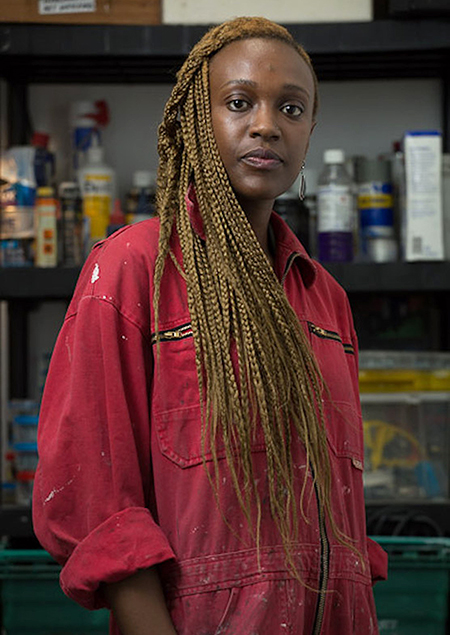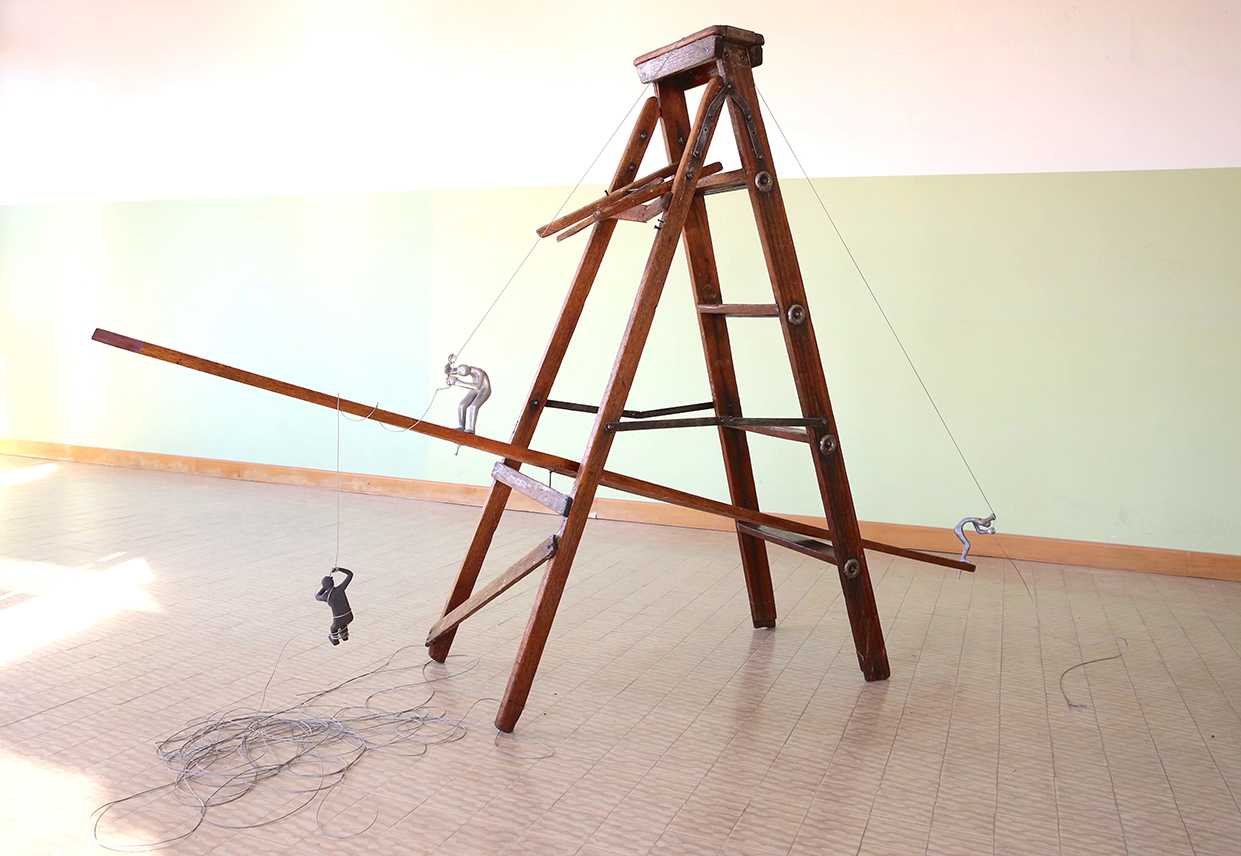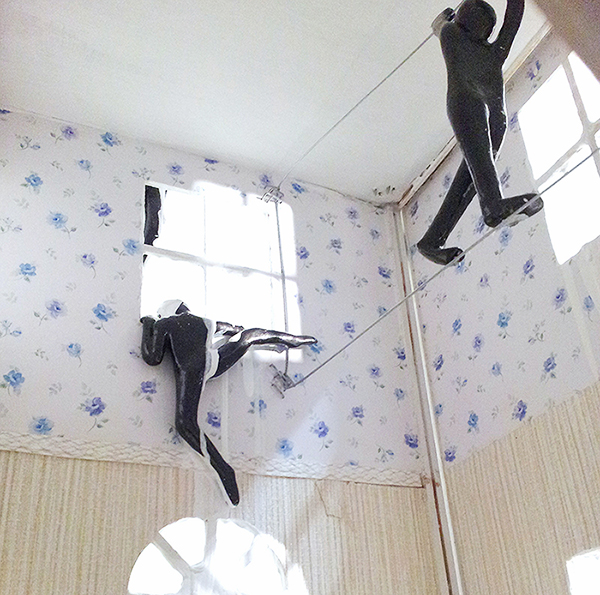Interview by Visual Collaborative
September 2019 5 min read

Arlene Wandera is a Visual artist based in London, UK. She exhibited in the Kenya Pavilion at the 57th Venice Biennale. As a feature in our “Supernova” interview series, Wandera talks to us about her work and life as a visual artist, her collaborations, observations and expressive interactions in a world of commerce.
(VC) Tell us about your upbringing and how it relates to your creative perspectives and daily life as an artist in the United Kingdom.
(Arlene) I was born in Nairobi, where I spent the first decade of my life and then my family moved to the United Kingdom, where I have lived ever since. I have always been interested in objects and gadgets. How they look, how they work, what you can do with them, how far you can push them, in terms of their limits. So it was only natural that I ended up choosing to predominantly make art using objects. In a way, I am inspired by the constant need to reflect back whilst moving forward. To present the memories of my early childhood in East Nairobi, against the context of growing up and living in multicultural East London. My life as a visual artist also puts me in a privileged position of experiencing other cultures from a wide scope lens given my background. This position of duality/ either/ neither is where my creative perspective originates.

On the ladder – Venice Biennale by Arlene Wandera
(VC) How did you become the other half of Duck & Rabbit Projects and tell us more about it.
(Arlene) Having shared a studio for seven years with my good friend and painter Richard Zeiss, we started collaborating in 2015 under the umbrella of “Duck & Rabbit Projects” a reference to Wittgenstein’s famous duck-rabbit illusion which either looks like a duck or rabbit depending on how the image is viewed. The collaboration initially started as an inquiry into ways in which this could work based on the differences we had in relation to physical, racial and cultural parameters as well as gender and art medium. We were curious to find out how these ideas could be negotiated in diverse cultural contexts and how the viewer would experience the work; whose work would set the tone, in which context and whether the outcome would be experienced as a sum of its parts, or morph into something new and different altogether. We did our first project together at NN Contemporary Project Space in Northampton, England where we made work in response to each other’s individual practice. We have done more projects since, and are currently working on incorporating writing and performance into our next project presentation in 2020.
people are genuinely interested in what I do and what I produce, so I have made my life less complicated by acknowledging that commerce is an intrinsic part of this creative world I have chosen to be part of
(VC) The world of commerce and global markets operate from the left side of the human brain, especially with its interactions with the creative sector. How do you navigate this reality as an artist?
(Arlene) As an artist, it is difficult not to acknowledge that at some point in your practice, you will encounter the world of commerce. In the early days of my practice and fresh out of art school, I was vehemently opposed to the entire notion and was determined to keep my ideas, research and production process untainted with the “commercial trappings” of the art world. I guess as you get older, you eventually realize that life is as much layered, as it isn’t. What I have discovered since the early days, is that people are genuinely interested in what I do and what I produce, so I have made my life less complicated by acknowledging that commerce is an intrinsic part of this creative world I have chosen to be part of. Working with a consultant who deals with the commercial aspects of my practice has really made all the difference when it comes to navigating this reality.
(VC) Congratulations on being one of the first Kenyans that represented the African continent at the 57th Venice Biennale. Can you share some of your experiences of being part of the Biennale?
(Arlene) It was an absolute honour. Being invited to represent Kenya at the Venice Biennale was such a wonderful privilege for many reasons. It was the first Kenyan Pavilion initiated by Kenyans. We all clubbed together as artists and the art community came and supported us. Don’t get me wrong, the entire experience was intense and stressful (as most most shows are during installation) but I think this is really important to acknowledge that what we did was something to be celebrated beyond the politics, red tape, differences in ideas and opinion because we actually made it happen against all the odds. This will hopefully go towards pressing the re-set button, whereby the Kenya Pavilion continues to exist as a platform that showcases art that challenges notions of what it is to be a contemporary artist from or based in Kenya today.

I’ve always wanted a [dolls] house by Arlene Wandera
(VC) Some mention the Renaissance as an art period they admire. If you could time-warp back to any era, what time would it be and why?
(Arlene) Gosh that’s a difficult question. Am I allowed to time-warp as a woman of East African heritage, who has been raised in the UK most of her life and fancies herself a visual artist? [Arlene laughs] Probably not. I really feel that I currently exist during an exciting time-period when it comes to creating and exhibiting art for people like me. I look forward to making my contribution to the history of art, within and beyond the Western canon. So honestly, I wouldn’t dream of changing a thing!
(VC) At this stage of your career considering your commitments, if you could collaborate with a specific enterprise, curator or individual, who would it be and why?
(Arlene) I actually don’t have anyone specific or any favorites. I am simply keen to collaborate with anyone and everyone who is open to exploring ideas, creating magic and changing the game.